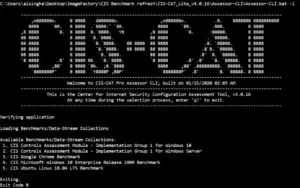Tech Giants Fail to Adequately Protect Children

- The Australian eSafety Commissioner’s new report reveals major shortcomings by tech companies like YouTube in combating online child abuse, leading the government to expand a social media ban.
Australia’s internet regulator, the eSafety Commissioner, has criticized major tech companies for not doing enough to combat child abuse material on their platforms. In a recent report, the commission specifically highlighted YouTube and Apple for failing to provide data on user reports of child exploitation. According to the commissioner, these companies could not state how many abuse reports they received or how long it took them to respond. The report’s findings led the Australian government to revoke YouTube’s planned exemption from new social media restrictions for teenagers, effectively including it in the ban.
The report’s author, eSafety Commissioner Julie Inman Grant (pictured), stated that companies are “turning a blind eye” to crimes committed on their services when left to self-regulate. She further emphasized that it is unacceptable for any industry to be licensed to operate while such heinous crimes occur on their premises. While Google has claimed that abuse material has no place on its platforms, the eSafety report suggests that these policies are not consistently implemented. The Meta-owned platforms—Facebook, Instagram, and Threads—also prohibit such content, but the report uncovered multiple deficiencies in their safety measures.
Persistent Safety Gaps
The eSafety Commissioner’s office required major platforms, including Apple, Discord, Google, Meta, Microsoft, and others, to detail their efforts against child exploitation. The analysis of their responses revealed significant safety gaps that increase the risk of such material appearing on their services. These deficiencies include the inability to detect and prevent live streaming of abuse and the failure to block links to known illegal content. Another major problem identified by the report is that many platforms’ user reporting systems are not working correctly or are insufficient.
The report also pointed out that most of the surveyed companies are not using “hash-matching” technology across all their services to identify and remove images of child abuse. This crucial tool compares new images against a database of known illicit content. Although Google claims to use hash-matching and AI as part of its protective measures, the report suggests their application is inconsistent. The regulator noted that several providers have not improved their safety measures despite receiving warnings about these gaps in previous years.
Lack of Transparency and Accountability
Commissioner Inman Grant’s statement highlighted a significant lack of transparency from tech giants. She noted that both Apple and YouTube were particularly unresponsive, failing to provide crucial information about the number of user reports they received regarding child abuse. They also neglected to disclose the number of trust and safety personnel they employed to handle such issues. This lack of cooperation underscores a broader issue of accountability within the tech sector.
The Australian government’s decision to include YouTube in the teenage social media ban reflects its commitment to prioritizing child safety over the companies’ claims of self-regulation. The report sends a clear message to the tech industry that more robust action and greater transparency are needed to ensure a safer online environment. The eSafety Commissioner’s office continues to monitor the situation, suggesting that further regulatory actions could be implemented if companies fail to address these critical safety issues.
Interesting fact
|








